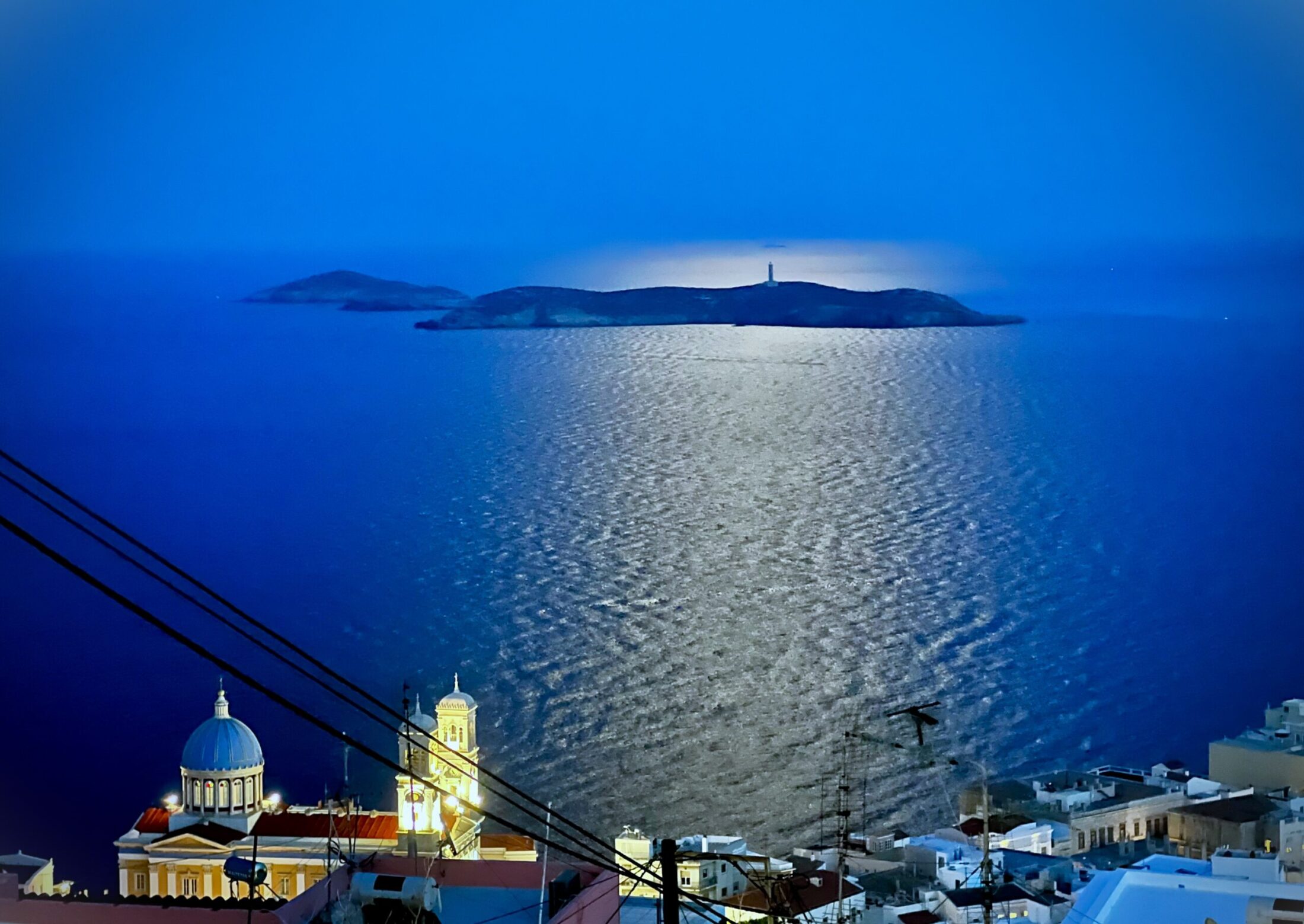— One hundred forty-four kilometers southeast of Athens in the Aegean Sea is the isle of Syros, the most populated (21,000) of the Cyclades group of islands and home to its administrative capital, Ermoupoli: a bustling harbor town of walking winding alleyways, bougainvillea, beeping scooters.
Syros hosts a branch of the University of the Aegean with a design and engineering school; Ermoupoli itself is built on two steep hillsides, each dominated by a basilica, one Orthodox, one Catholic.
One of the big moons of the year is out here over Agios Nikolaos, and the harbor, and the uninhabited beach island of Didimi, and its lighthouse beacon, oldest lighthouse in a very much older country.
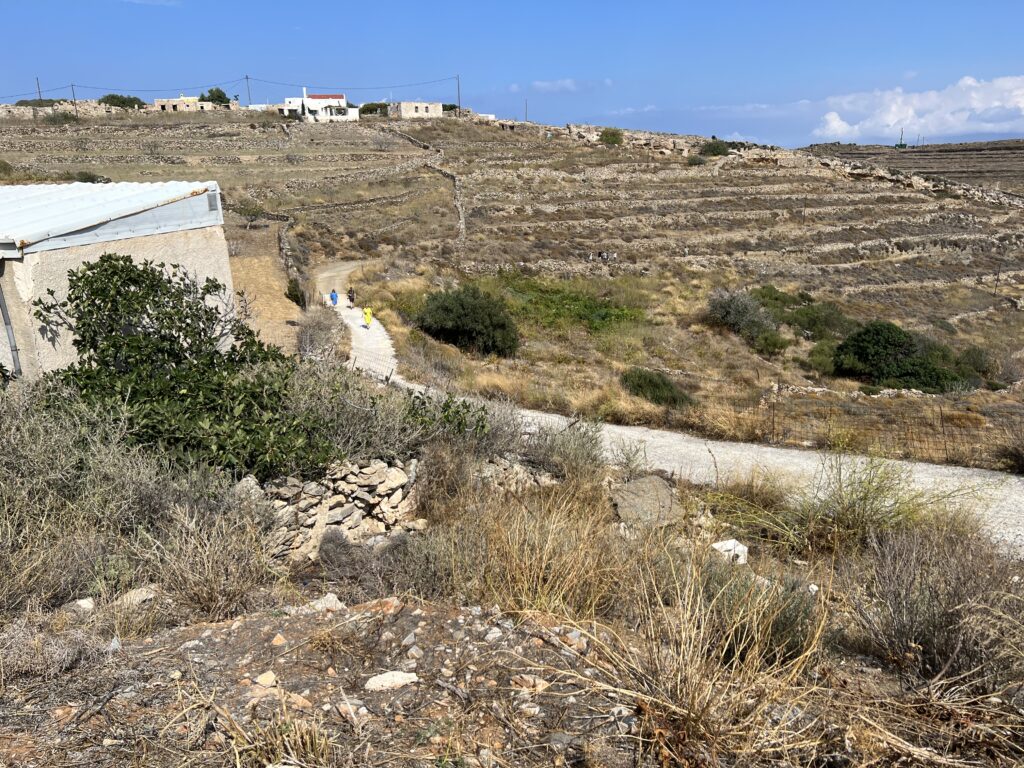
— Ermoupoli held a lot of Aegean industry, a small shipworks and textiles; but the island’s sparsely-populated and remote Apano Meria, or upper side, starts just a few ridges over from town.
It is arid, with few shade trees, dotted with occasional houses, many of which sit empty in the off-season; dusty roads, wild trails, small patches of grape vines or olives and the odd beekeeping patch. Terracing comes from the old piled stone walls which mark off property boundaries.
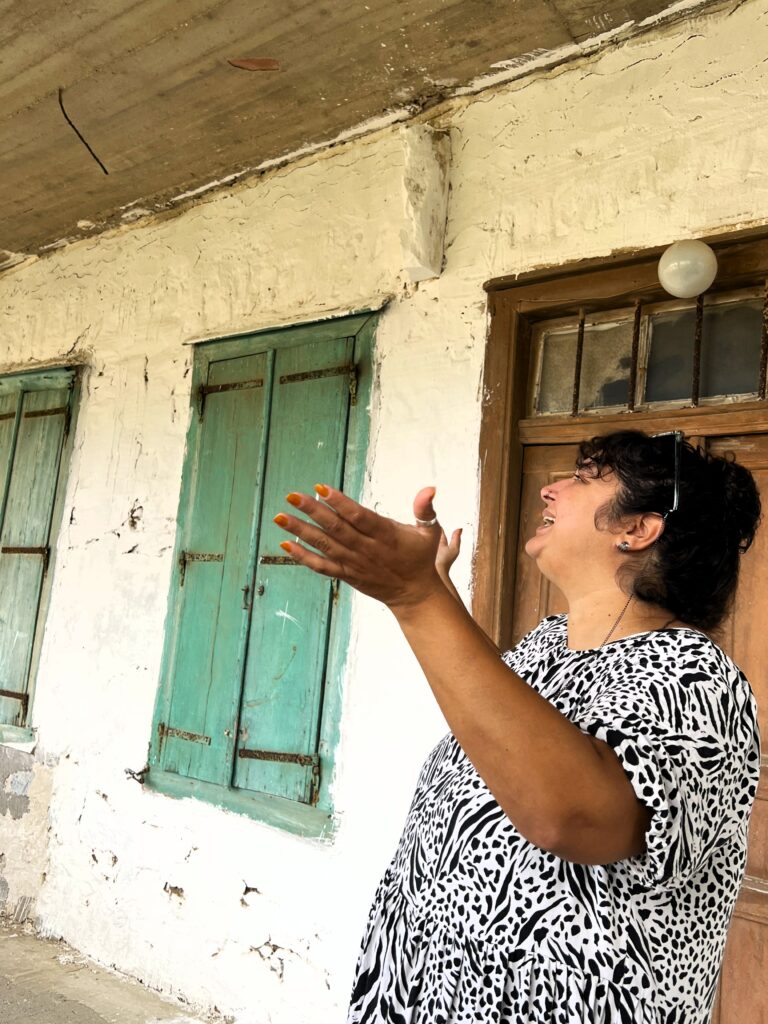
— Last September SMOTIES was holding one of its series of transnational group meetings; here one of the heads of Apano Meria, a small nonprofit and advocate for the area’s preservation and culture, is poetic in her gesture to the fine points of its work-in-progress research hub (which includes a work-in-progress garden bed). Volunteers can come for extended stays and bunk in the communal house.
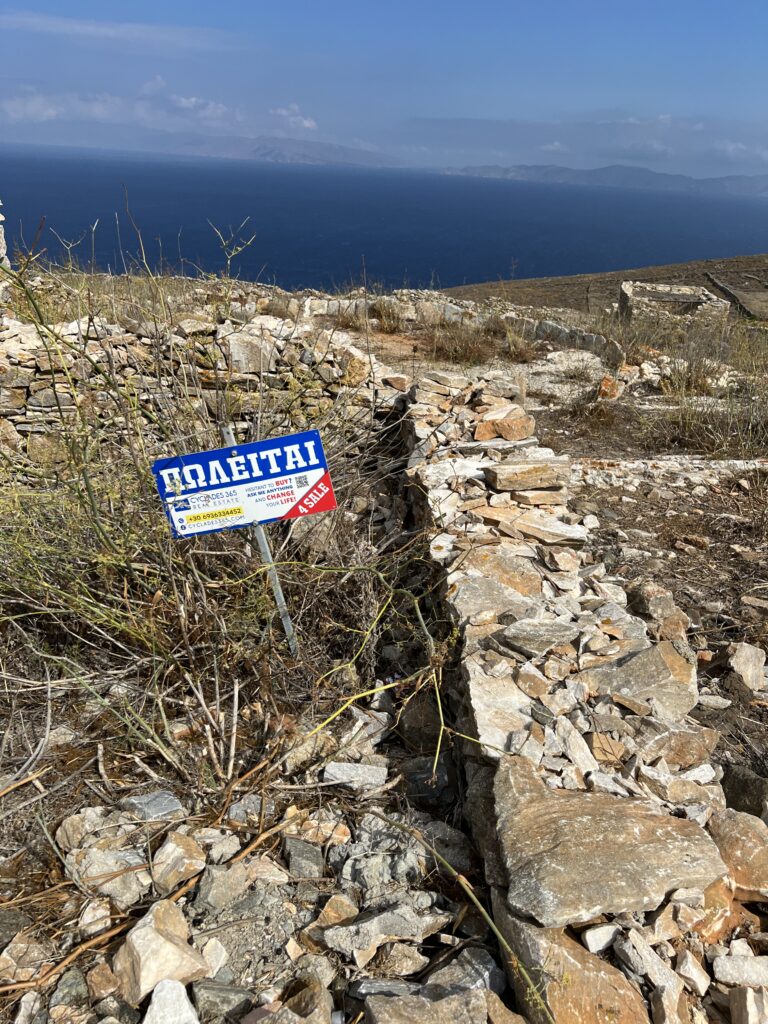
— Hesitant to buy? As me anything and CHANGE YOUR LIFE!
This English-language ‘4 Sale’ signpost near St. Michaelis settlement may be overpromising here; even so, the Apano Meria group is worried about overdevelopment and excessive water use on this part of the island. These concerns are shared in other parts of the Cyclades.
Syros depends heavily on tourism and temporary holiday stays, like many small and remote places—but is also vexed by it. On a parching hot day the blue Aegean looked cool and inviting and close. It might make you wonder why you’d spend time and resources to build a private pool with the sea so near.
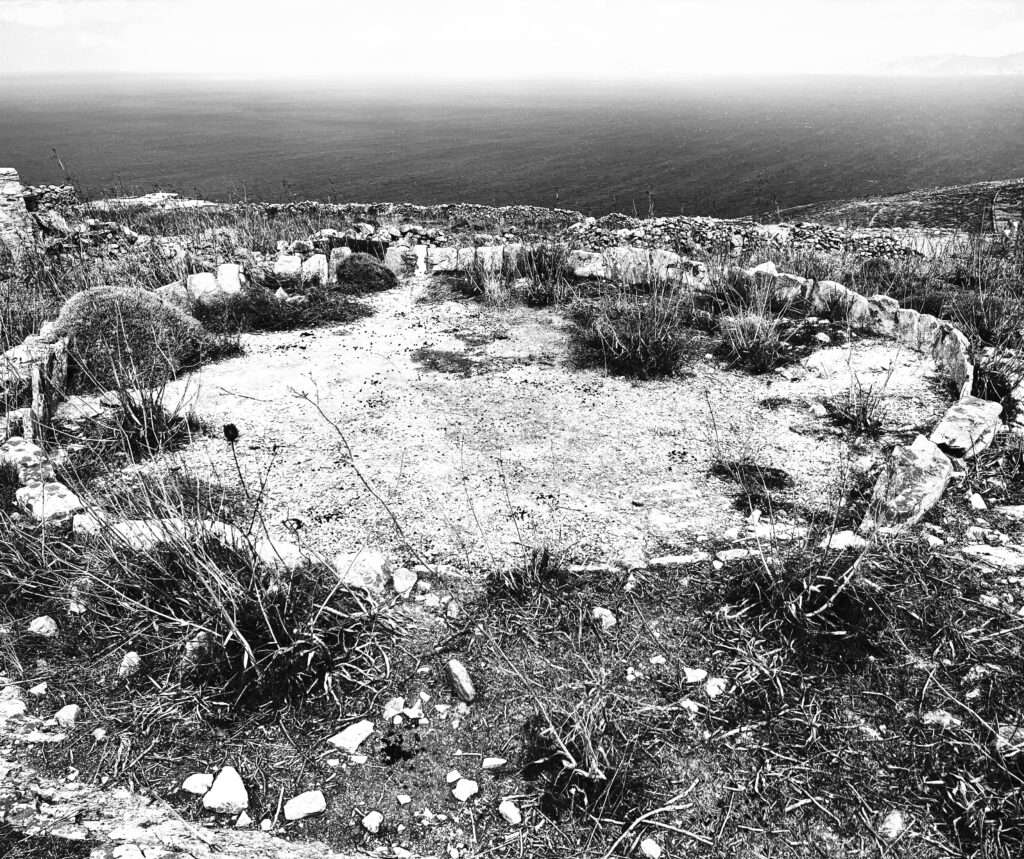
— A ring of stones nearby serves as a sheep or goat shelter in a nod to a more traditional form of trade.
It’s a hard living, though, goat herding.

— One of the concepts being pursued by the SMOTIES partners at the University of the Aegean alongside these small community enterprises like Apano Meria is to convert white concrete bus stops dotted around the north of the island (stops which serve no existing bus network) into little garden shelters, maybe a place to pause for hikers and a bit of floral green.
Minimal maintenance of the shelters could be taken up by volunteers.
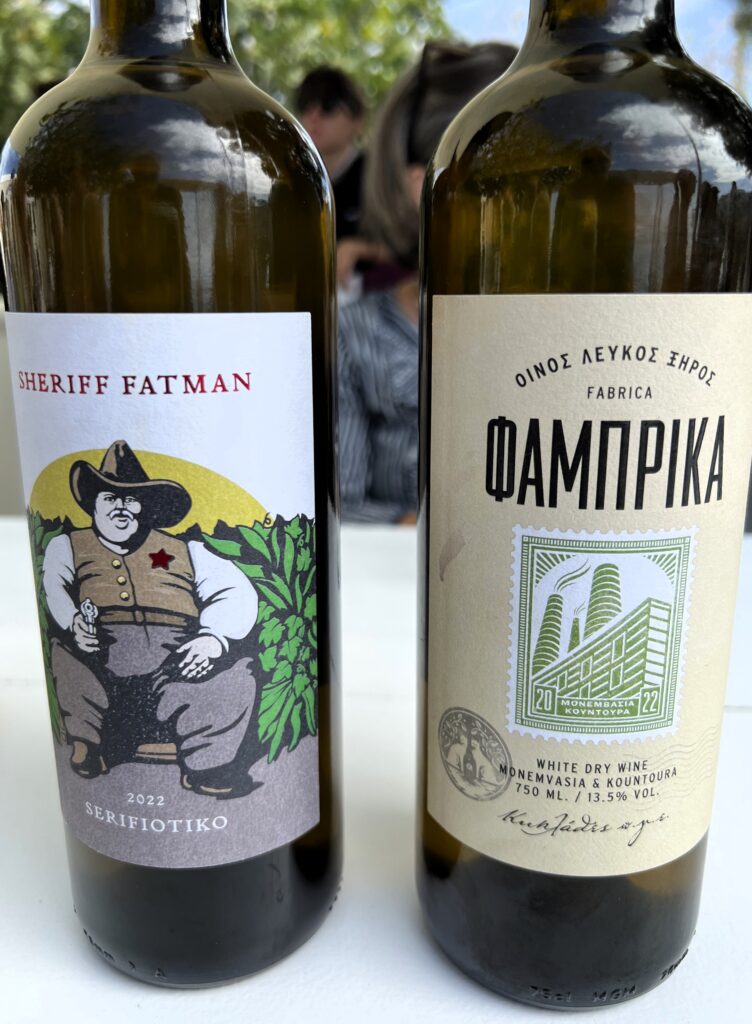
— Across the road from that particular bus shelter is Chatzakis Winery, a small operation featuring local Monemvasia and Kountoura grapes. The Serifiotiko is a very local grape which inspired winemaker Nikos Chatzakis to label one of his productions ‘Sheriff Fatman.’
Nikos also shows affinity for music in his winery (with a big Joy Division poster from an Edinburgh show in 1980 on the wall behind his desk) and other diverse interests (on his shelves sits guides for Table Soccer in any Language; also books on mathematics and on postmodern winemaking).
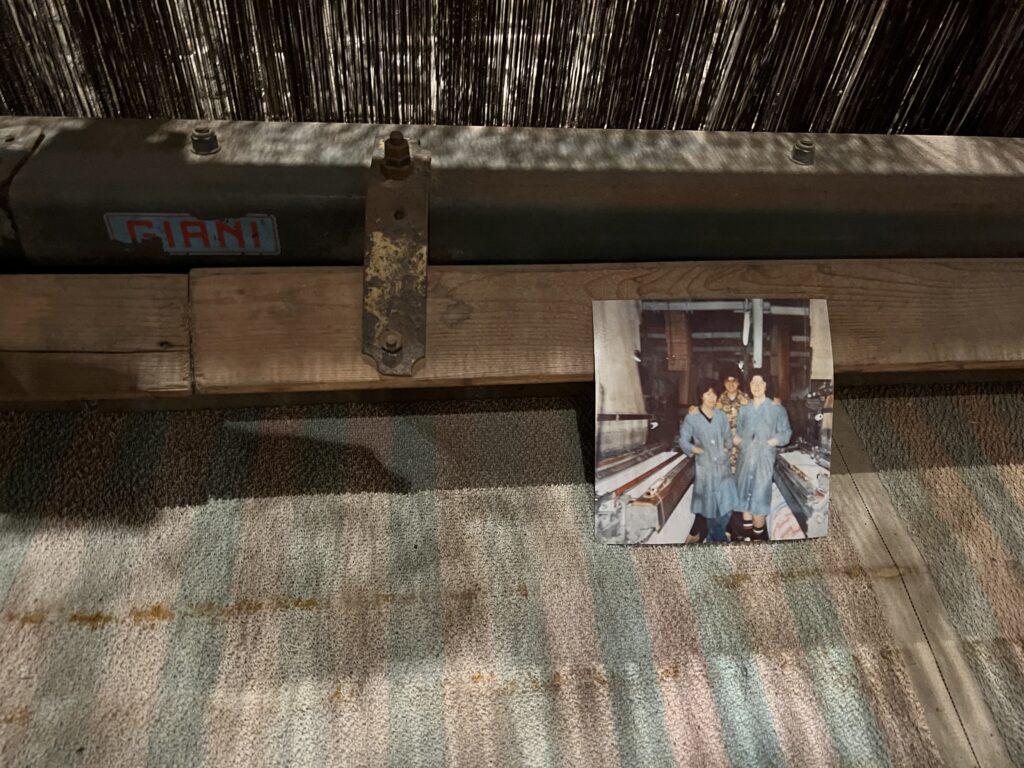
In Ermoupouli there’s a small alleyway that leads to the restored ruins of the Zisimatos textile mill, shuttered in 1986 and turned into a restored place for events, memory and a kind of ode for the town’s industry, both ups and downs.
It has the feel of industry and it is a stylish place to have a large group dinner and listen to Greek tunes in the evening. Even so the corners of the place still carry hints of mourning.
Zisimatos closed overnight: everyone laid off in one day. Desks strewn with overturned papers and chaos are part of the exhibit. What really happened isn’t made clear. But you very much get the feeling that the place went under immediately after a phone call from either a bank or the police. Would be a rough way to go for a closeknit family of workers.
And now the big silent Giani weaving machines dominate a long and restored machine hall; mementos of the working life there are carefully placed.
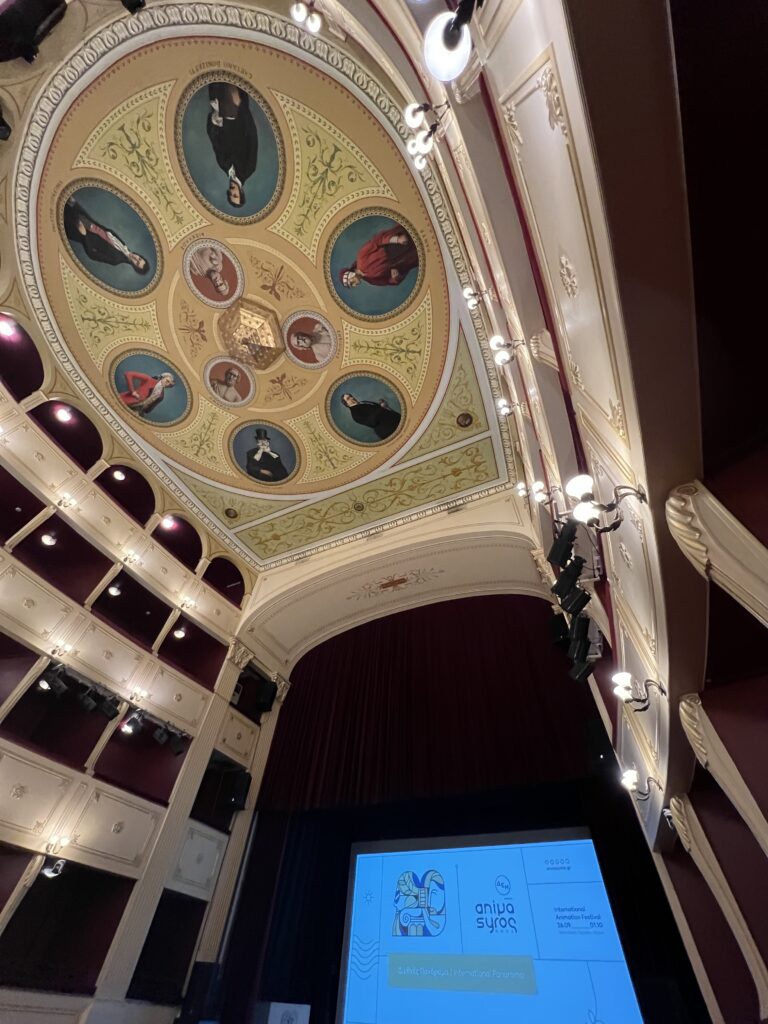
— Across town the Animasyros festival was kicking off; this annual fair for animated film features a panoply of international and Cycladic filmmakers is centered in the Apollon municipal theater, a 19th century jewel on the hill.
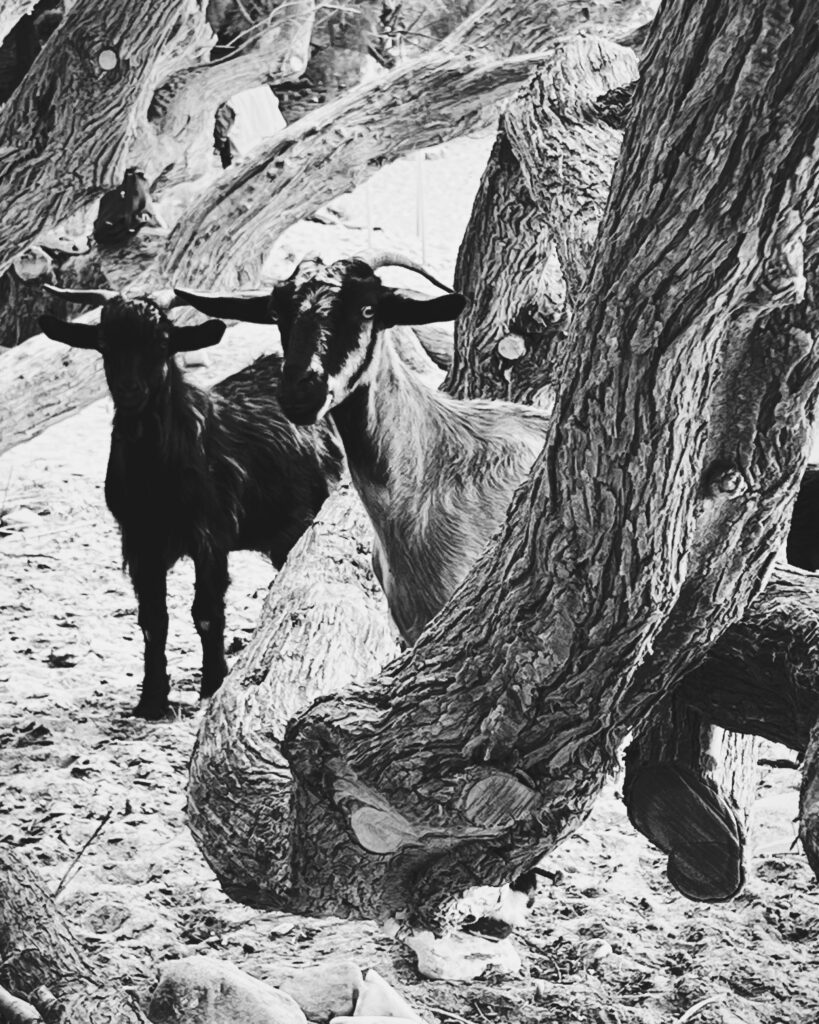
— And over the top of the ridge, a half-hour drive and a half-hour by boat around the northwestern side of the island to Grammata cove, and it is back to the wild life. This is a place called ‘Americanou Beach’ where the economist John Pierson—when he was living there in the 1960s—planted trees, some 10,000 of them, 5,000 of which are still living. It may be the largest forest on this island. At first there were pens to keep the goats away. Now the goats live among the trees.
So long then to Syros; in our next post we’ll head 2000 kilometers northto Cieszyn, a little south of Katowice and Krakow in the Silesian foothills of Poland along the border with the Czech Republic.
—
Across town the Animasyros festival was kicking off; this annual fair for animated film features
a panoply of international and Cycladic filmmakers is centered in the Apollon municipal theater, a 19th century
jewel on the hill.
